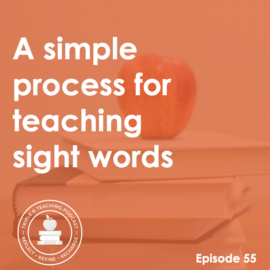Want to know how to teach synthesizing? This lesson is easy … and it works!
This post contains affiliate links.

Have you been following along with the reading comprehension series that I’m doing with This Reading Mama? Each week, we show you how to teach a reading comprehension strategy with a particular picture book.
Here’s what we’ve shared so far!
- Setting a purpose for readingwith Surprising Sharks
- Teaching kids to activate prior knowledge with American Alligators
- Making connections with Leon and Bob and Jessica
- How to teach predicting with Enemy Pie
- Making inferences using My Lucky Day
- How to teach visualizing with Owl Moon
- Asking questions with Grandfather Twilight
- Determining importance with the Who Would Win series
- How to teach summarizing with Biggest, Strongest, Fastest
Today we’re on to the final reading comprehension strategy, which also happens to be the most challenging to teach … SYNTHESIZING.
So. Let’s tackle this bad boy.
What is synthesizing?
Synthesizing is closely related to determining importance and summarizing. Here’s a great definition from Debbie Miller, in her book Reading with Meaning.
Synthesizing is the process through which readers bring together their background knowledge and their evolving understanding of the book to create a complete and original understanding of the text.
If you’re thinking this sounds way too complicated for K-2, hear me out.
Our goal here is to help our students be thoughtful readers. Not parrots. We want them to bring their whole brains to their reading. We want them to know that their thinking can (and often should) change as they read.
How to teach synthesizing with fables
A fable is a short story, often starring animals, which teaches a simple moral. Some of the most popular fables are The Tortoise and the Hare and The Boy Who Cried Wolf.
I like using fables to teach synthesizing because the moral of the story isn’t clear until the end. Learners can read (or listen to) a fable and stop at different points to examine their thinking.
Here’s a simple 4-step process:
1- Choose a fable. Ahead of time, mark 2-3 spots in the fable to stop and think out loud. Cover the moral at the end of the fable with a sticky note.
2- As you read the fable to your students, stop at each point and talk about what you’re thinking.
3 – Just before you reach the end of the fable, state the lesson that you’ve learned.
4 – Uncover the lesson given by the author. Did you reach a similar conclusion? Discuss.
A sample lesson

For this sample lesson, I’ll choose a less familiar fable – Donkey and the Lapdog – from the wonderful (SO wonderful!) book Aesop’s Fables, by Jerry Pinkney.
Here’s a summary for you: In the story, the donkey is jealous of the attention his owner gives the lapdog. So he decides to act like the lapdog in hopes of also getting special treatment.
Lesson introduction
“Today I’m going to read a fable. A fable is a story, usually about animals, that also teaches a lesson. Today’s fable is called The Donkey and the Lapdog. As I read, I’m going to stop and think about what I’m learning from the story. At the end, I’ll share the lesson that I think the author wants me to learn. Then I’ll check to see if my conclusion is the same as the author’s.”
(Read.)
Think aloud (end of second paragraph)
“Okay, I’ve read that the donkey is unhappy. Even though he gets good treatment in the stable, he wants to be like the lapdog. He wants to sit on his master’s lap and eat in the kitchen. He thinks that if he acts like the dog, he might get to live in the house. Sounds like trouble! Let me see what happens next.”
(Read.)
Think aloud (end of fourth paragraph)
“Well, the donkey ran around waving his tail like a dog. This made a big mess. Then he sat on the master’s lap. I don’t think this is going to go well! Let’s see how the master responds.”
(Read.)
Think aloud (end of story):
“Well, the donkey didn’t get what he wanted! He just scared the farmer and got thrown back into the stable. I think that the lesson of this story is that you should be yourself and not try to be someone else. Let’s see… the author’s moral is this: What’s right for one may be wrong for another. Hmm. I think that’s a lot like the lesson that I found. What do you think?”
The nice thing about fables is that they are short and sweet. You could do several of these examples in one interactive read-aloud session. As you model it more and more, you could have students stop to share with a partner at different spots – instead of listening to you think aloud.
Be sure to check out the whole series!






[…] Synthesizing {The Measured Mom} […]